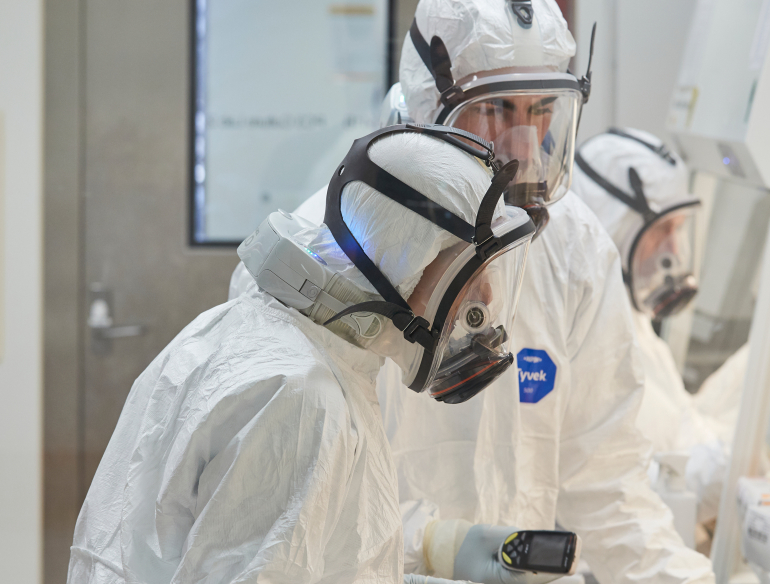A major laboratory study led by the Kirby Institute at UNSW Sydney has found that despite Australia being exposed to many diverse Omicron sub-variants, widespread vaccination and previous exposure within the population has meant that SARS-CoV-2 is still largely ‘neutralised’. This means that despite high infection rates, severe disease and death, remain low.
The research, which was published last week in The Lancet eBioMedicine, also found that current COVID-19 treatments Evusheld and Sotrovimab are becoming either no longer active or less effective against existing and emerging SARS-CoV-2 variants.
“The Omicron era of the pandemic was characterised by widespread infection with a number of sub-variants, like BA.2.75 and BA.5, their sub-lineages,” says Associate Professor Stuart Turville, who led the research at the Kirby Institute. “Whilst the variant “soup” was of initial concern, they were all following a similar trajectory, with many clusters of key changes being the same across each variant. The shared changes in the Spike glycoprotein of the virus, gave each variant an ability to evade and navigate neutralising antibodies better.
“In our laboratory, we analysed each of these sub-variants to build a picture of how they might impact the health of the nation. Unlike prior waves, where we looked at one to two variants, in 2022 we were looking at 8 to 10 variants at a time,” says A/Prof Turville.
During 2022, the research team monitored antibody neutralisation responses to many emerging variants in the Australian community through three approaches.
1. A pool of over 420,000 plasma donors through various vaccine and booster rollouts.
2. Mapping the antibody response at individual level through existing Australian cohorts.
3. Testing all variants in the laboratory against the clinically approved therapies Evusheld and Sotrovimab.
“Using this methodology, we were able to test and analyse the potential impact of variants prior to them being in wide circulation in the Australian community. We were able to determine which emerging variants were most evasive and provide this advice to health authorities,” says Dr Anouschka Akerman from the Kirby Institute who was first author on the paper.
As part of this research, the team also found that existing treatments were becoming less effective against these newer sub-variants of COVID-19. This finding was published as a pre-print in January this year and shared with health departments and the media.
“Being able to rapidly analyse the impact of new variants and share those findings with the broader community allows for a more flexible response to the pandemic. Research like this provides crucial information for where treatment research needs to develop,” says Dr Anupriya Aggarwal from the Kirby Institute who is co-senior author on the paper.
The work has been shared with state and national health departments, facilitating rapid translation of laboratory research into health policy. The ongoing collaboration has allowed for better data sharing and improved communication.
“A huge amount of work in the lab is involved to get a result like this. I want to thank my teams in the Kirby Institute laboratory and other laboratories. Together we created and analysed thousands of tests against multiple variants, providing a significant contribution to Australia’s understanding of our pandemic trajectory,” says Associate Professor Turville.
